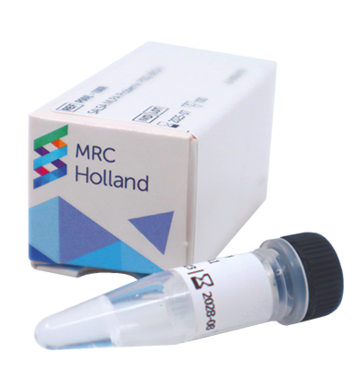P016 VHL

SALSA MLPA Probemix P016 VHL detects copy number variations in the VHL and BRK1 gene.

Contents: 29 MLPA probes, including 9 probes for VHL and 2 probes for BRK1.

Tissue: genomic DNA isolated from human peripheral whole blood.

Application: Von Hippel-Lindau (VHL) disease type I and IB.

IVDR certified and registered for in vitro diagnostic (IVD) use in selected territories.
